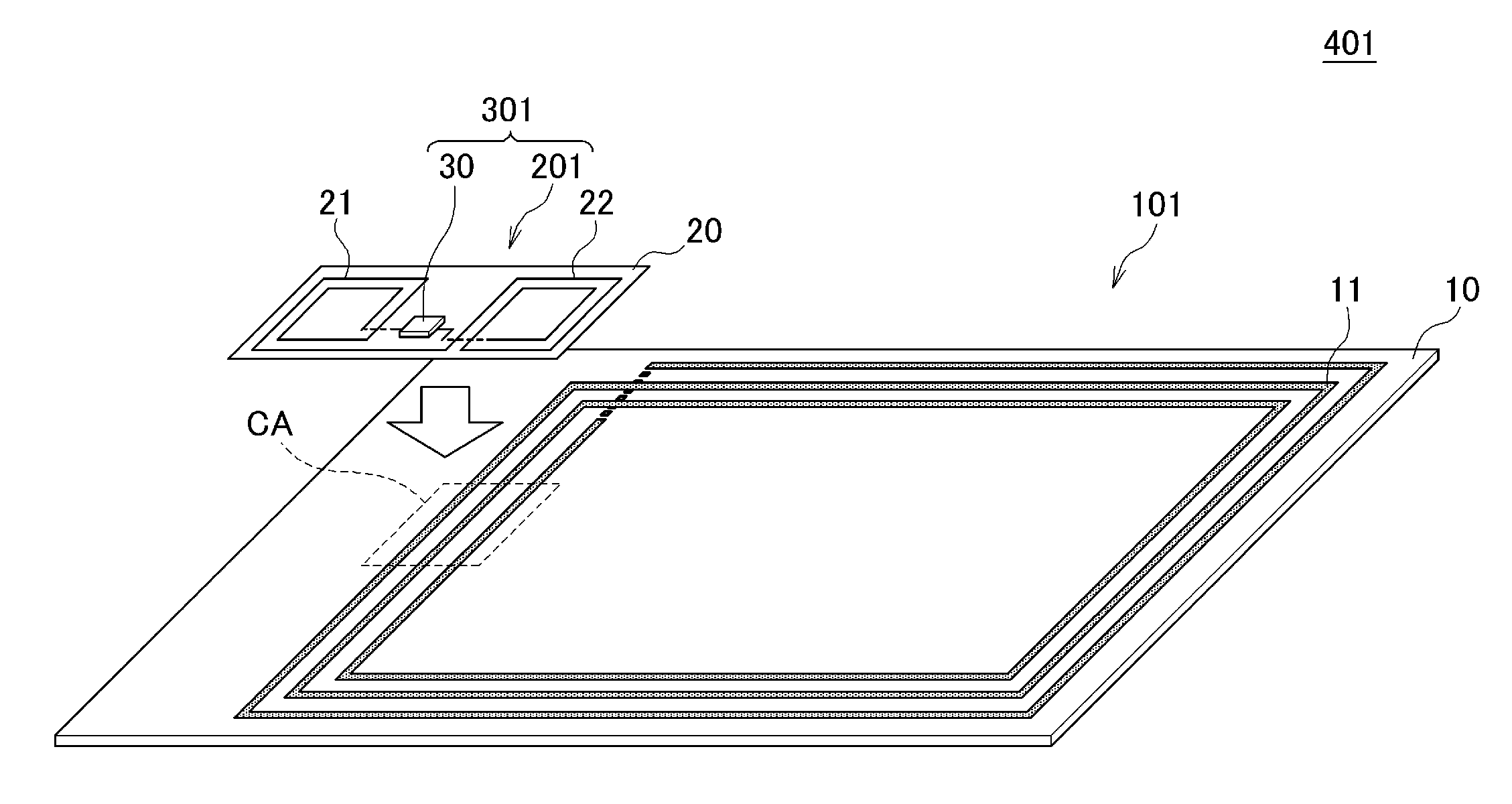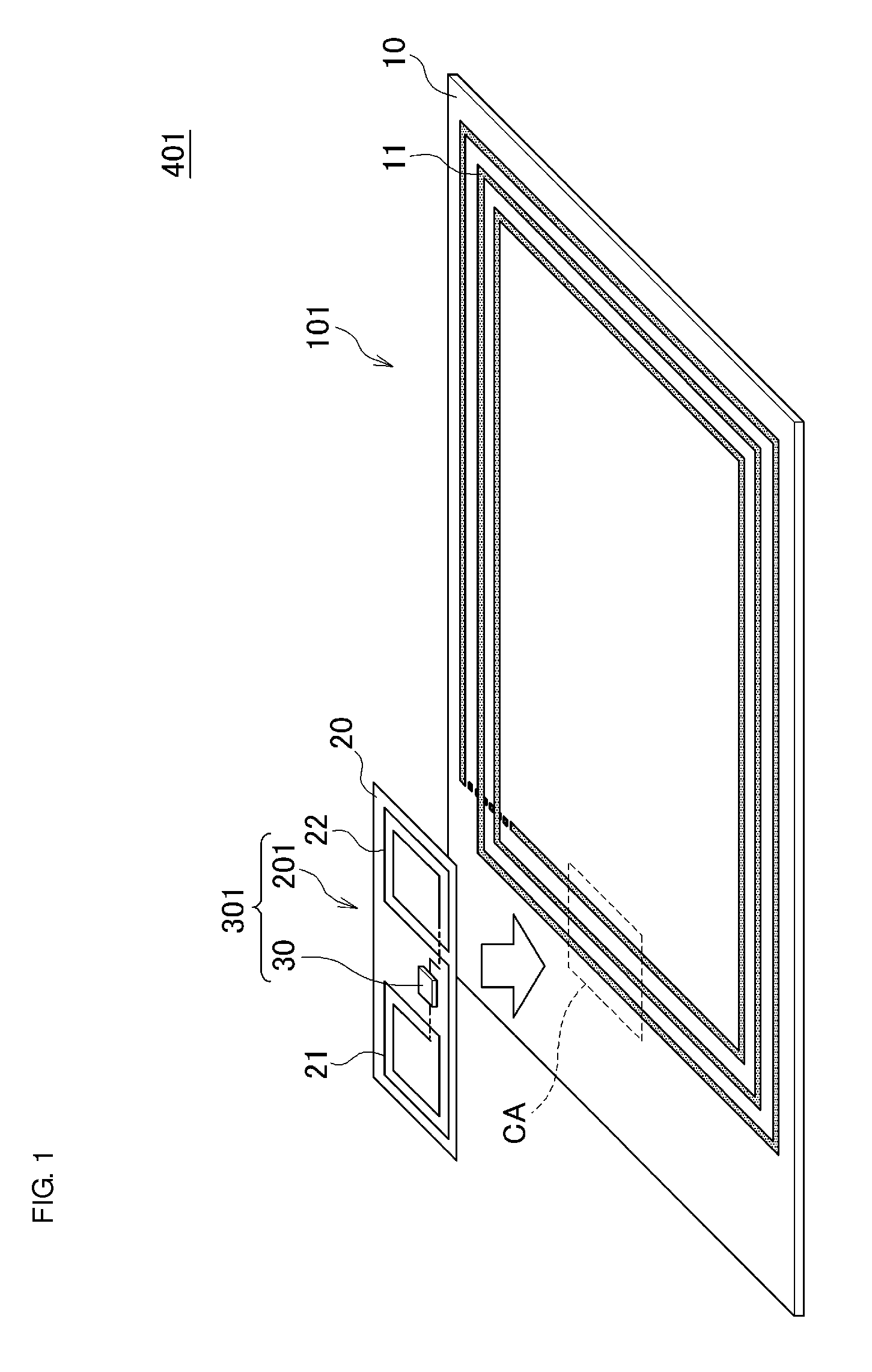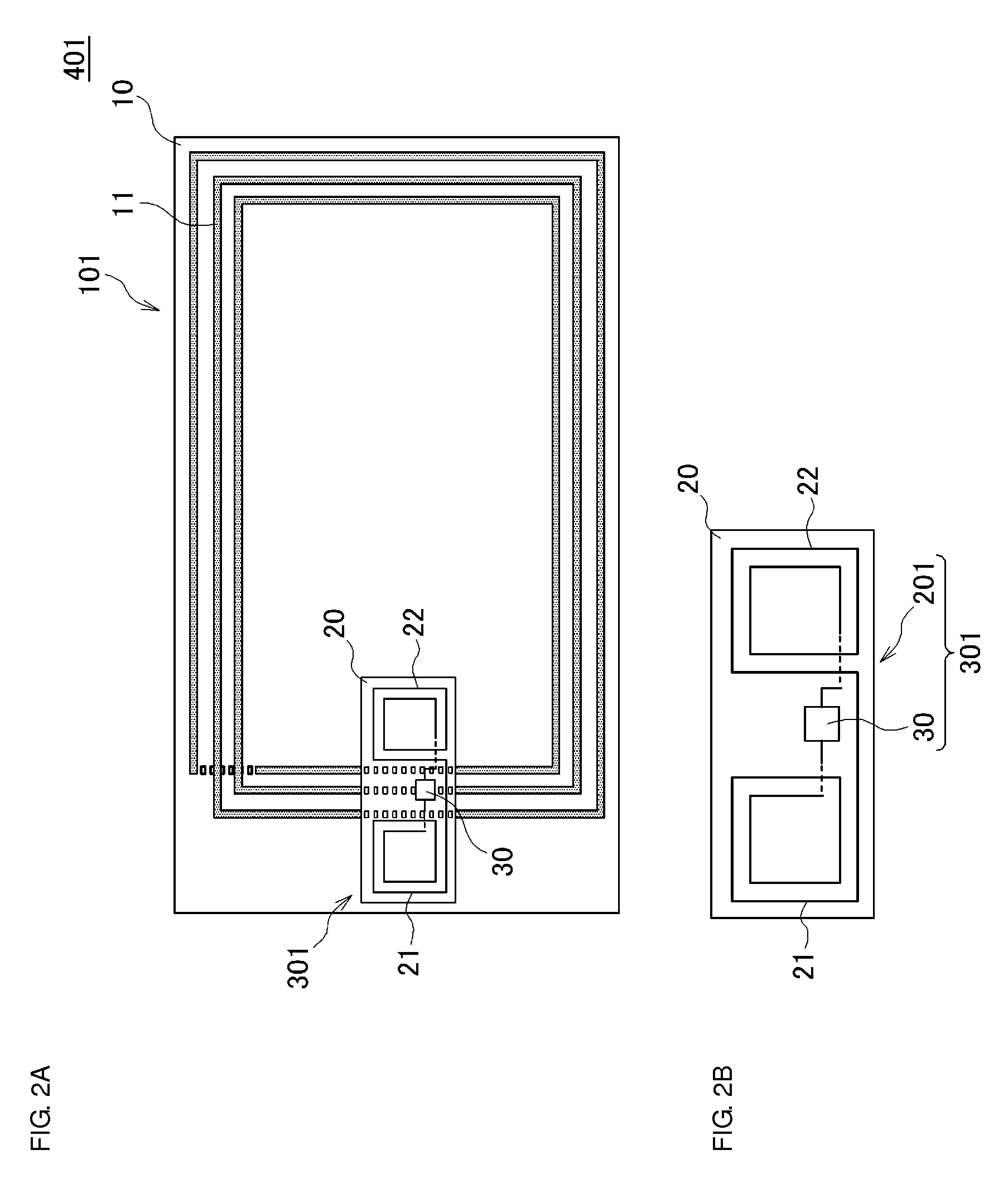Antenna device and wireless device
a wireless device and antenna technology, applied in loop antennas, radiating element structure forms, instruments, etc., can solve the problems of increased insertion loss, complicated bonding process, and inability to ensure high connection reliability, so as to increase the maximum communication distance of rfid tags or readers/writers, the effect of low insertion loss
- Summary
- Abstract
- Description
- Claims
- Application Information
AI Technical Summary
Benefits of technology
Problems solved by technology
Method used
Image
Examples
first preferred embodiment
[0044]FIG. 1 is an exploded perspective view of an RFID tag 401 according to a first preferred embodiment of the present invention. FIG. 2A is a plan view of the RFID tag 401, and FIG. 2B is a plan view of a feed device 301.
[0045]In this example, the RFID tag 401 is an RFID tag for an HF-band RFID system and includes an antenna element 101 and the feed device 301. The antenna element 101 preferably includes a base sheet 10 made of PET or the like and a coil conductor 11 located on the upper surface thereof. The feed device 301 preferably includes a feed element 201 and an RFIC 30.
[0046]The RFIC 30 is an IC chip for RFID. The RFIC 30 preferably includes a memory circuit, a logic circuit, and the like.
[0047]The feed element 201 preferably includes a base sheet 20 made of PET or the like, and a first coil conductor 21 and a second coil conductor 22 located on the upper surface of the base sheet 20.
[0048]As described below in detail, the first coil conductor 21 and the second coil condu...
second preferred embodiment
[0057]In a second preferred embodiment of the present invention, a structure of an antenna element which is different from that in the first preferred embodiment is described.
[0058]FIG. 4A is an exploded perspective view of coil conductors 11 and 12 included in an antenna element 102. The coil conductor 11 is located on a first main surface of a base sheet (not illustrated in FIG. 4) and the coil conductor 12 is located on a second main surface of the base sheet.
[0059]FIG. 4B is an equivalent circuit diagram of the antenna element 102 illustrating the case where the two coil conductors 11 and 12 face each other with the base sheet interposed therebetween. FIG. 4C is an equivalent circuit diagram illustrating the case where the feed device is coupled to the antenna element.
[0060]As illustrated in FIG. 4A, the coil conductor 11 and the coil conductor 12 of the antenna element 102 are preferably arranged in a rectangular or substantially rectangular spiral pattern. The winding directio...
third preferred embodiment
[0062]In a third preferred embodiment of the present invention, a structure of a feed element and a feed device, which is different from that in the first preferred embodiment, is described.
[0063]FIG. 5 is an exploded perspective view of a feed element 203 and a feed device 303 according to the third preferred embodiment. The feed element 203 includes a plurality of stacked dielectric base sheets on each of which a pattern of a coil conductor or the like is provided. Terminals 23 and 24 to connect the RFIC 30 are provided on a base sheet 20a. Coil conductors 21b and 22b are provided on a base sheet 20b. Coil conductors 21c and 22c are provided on a base sheet 20c. Coil conductors 21d and 22d are provided on a base sheet 20d. Via conductors are provided on each of the base sheets as shown by the dashed lines in FIG. 5 to define inter-layer connections.
[0064]The coil conductors 21b, 21c, and 21d and the via conductors connecting these coil conductors constitute the first coil conducto...
PUM
 Login to View More
Login to View More Abstract
Description
Claims
Application Information
 Login to View More
Login to View More - R&D
- Intellectual Property
- Life Sciences
- Materials
- Tech Scout
- Unparalleled Data Quality
- Higher Quality Content
- 60% Fewer Hallucinations
Browse by: Latest US Patents, China's latest patents, Technical Efficacy Thesaurus, Application Domain, Technology Topic, Popular Technical Reports.
© 2025 PatSnap. All rights reserved.Legal|Privacy policy|Modern Slavery Act Transparency Statement|Sitemap|About US| Contact US: help@patsnap.com



